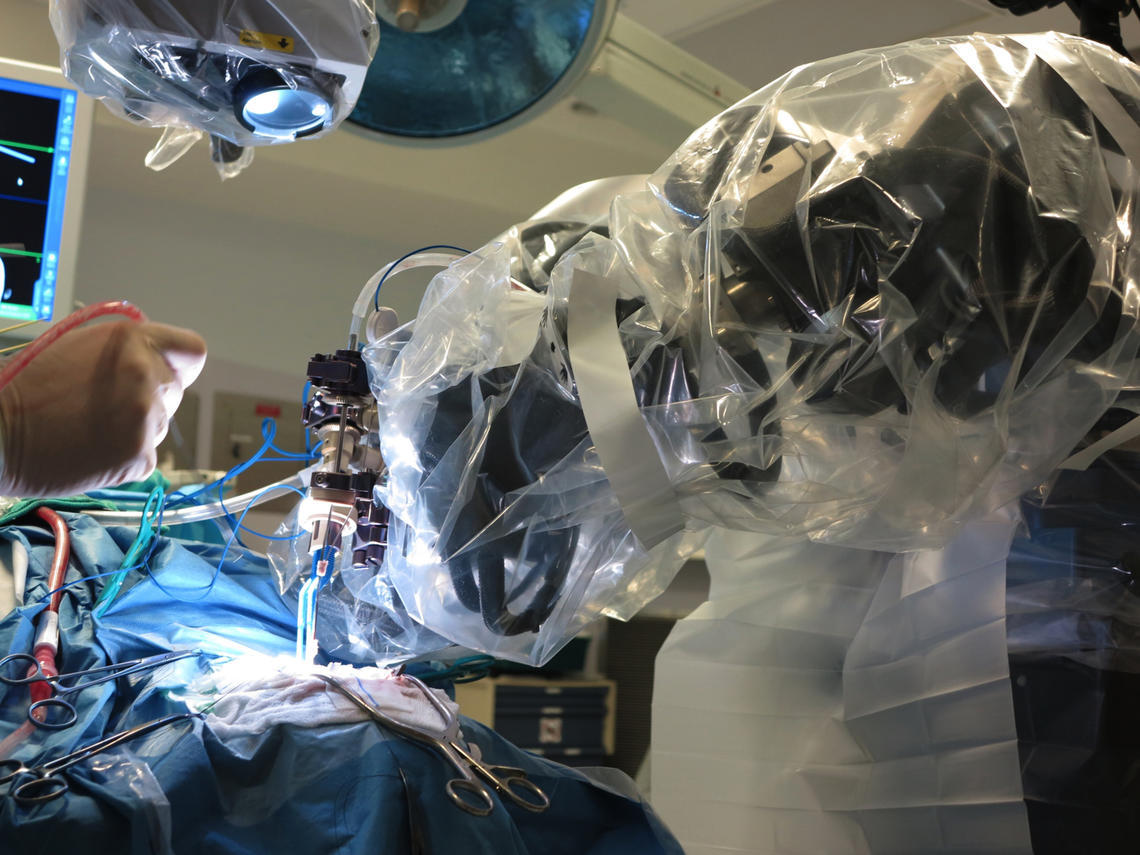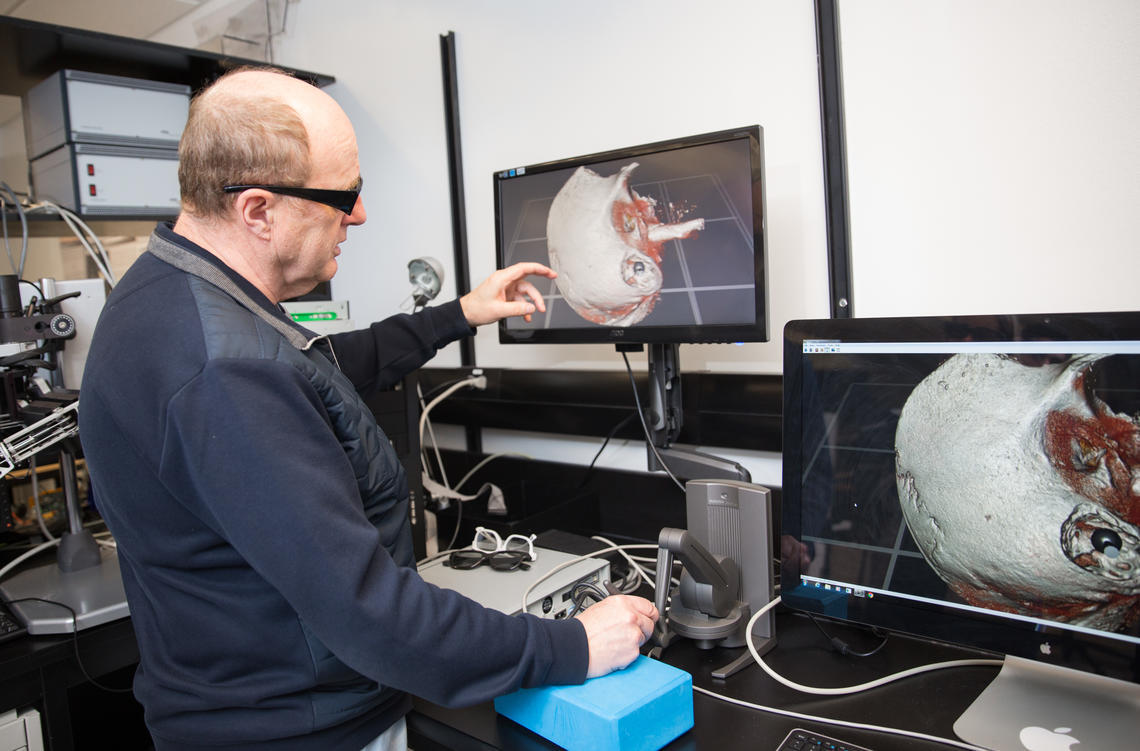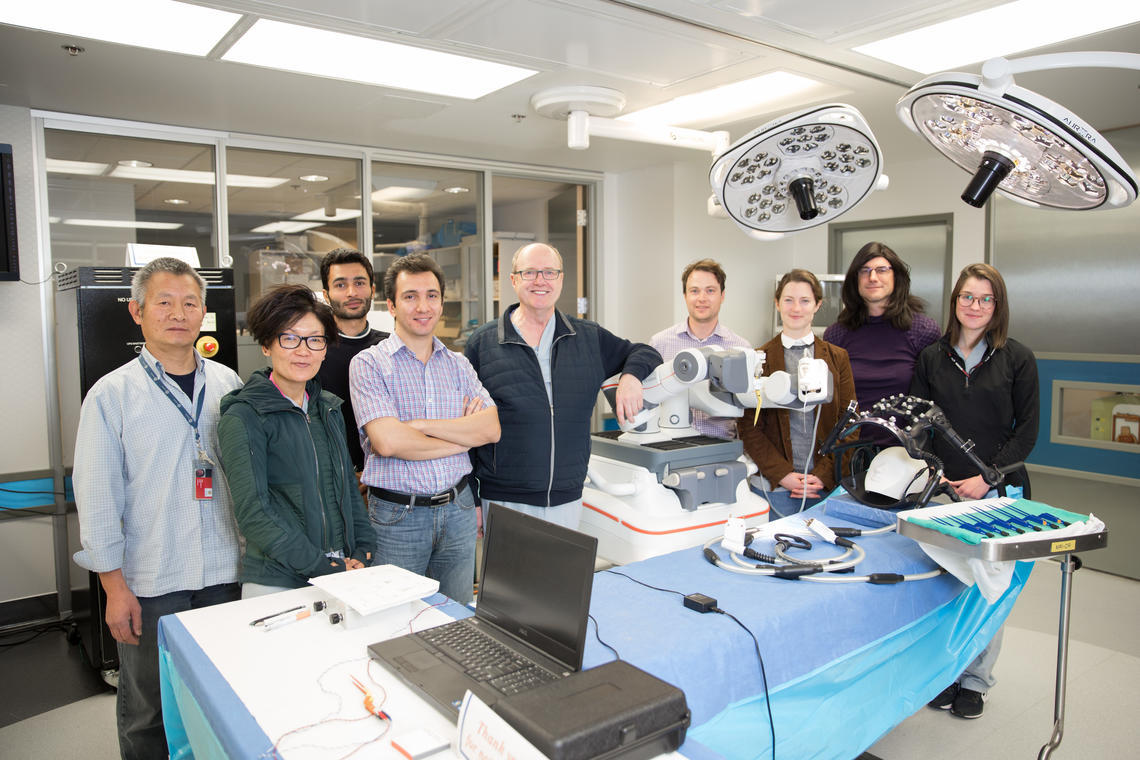Project Neuroarm: Image-Guided Medical Robotics Program
Robot-assisted brain surgery improves patient safety, reduces complications and length of hospital stay

The neuroArm manipulators in use at the 3.0T iMRI operating suite at the Foothills Medical Centre in Calgary
The neuroArm surgical robotic system combines the precision and accuracy of robotics with the decision-making capacity of the human mind. Designed to operate within an intra-operative magnetic resonance imaging (MRI) environment, the neuroArm recreates the sight, sound and touch of surgery at a remote workstation. Using this technology, a surgeon is able to operate, in near real time, on patients in a different room, a different city, or presumably, even a different planet.
The world’s first image-guided, MR-compatible robot was developed by Dr. Garnette Sutherland at the University of Calgary in collaboration with MacDonald, Dettwiler and Associates (MDA). As robots allow high precision accuracy through features such as motion and force scaling, tremor filters and no-go zones, the technology allows increased safety and minimally invasive surgery. This in turn results in fewer complications and shorter hospital stays so patients can get back to normal activities faster. The neuroArm has been used to operate on over 80 patients at the Foothills Medical Centre.
A new collaboration with researchers in the Schulich School of Engineering is exploring whether the technology can perform surgery on patients at an extreme distance, in space, through the Robot-Assisted Space Telemetry (RAST) project.

Patient-specific surgical simulation software developed by the neuroArm team (Sonny Chan) allows surgeons to practice in virtual reality prior to entering the operating room

Core team members Project neuroArm and RAST (left to right): Fangwei Yang, Sanju Lama, Mojtaba Esfandiari, Hamidreza Hoshyarmanesh, Garnette Sutherland, Dustin Proctor, Rachael L'Orsa, Chris Macnab, Madeleine de Lotbiniere-Bassett
Team
Partners
Macdonald, Dettwiler and Associates (MDA)
IMRIS Inc.
University of Manitoba
